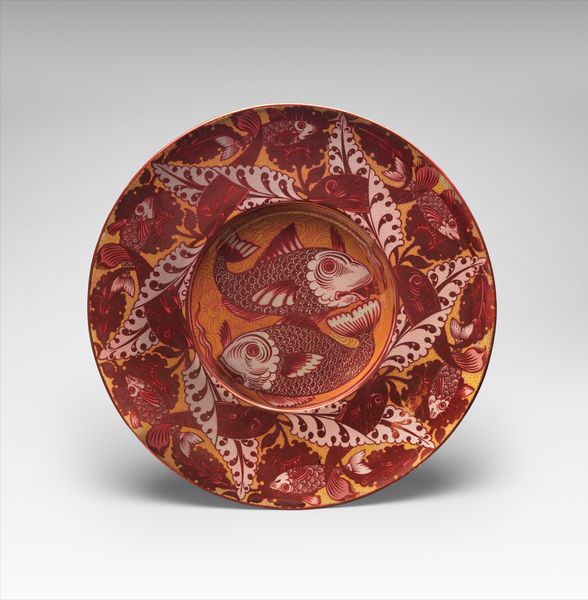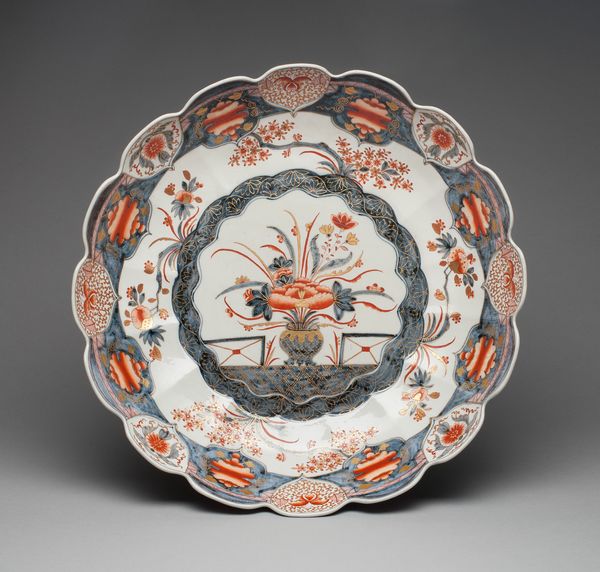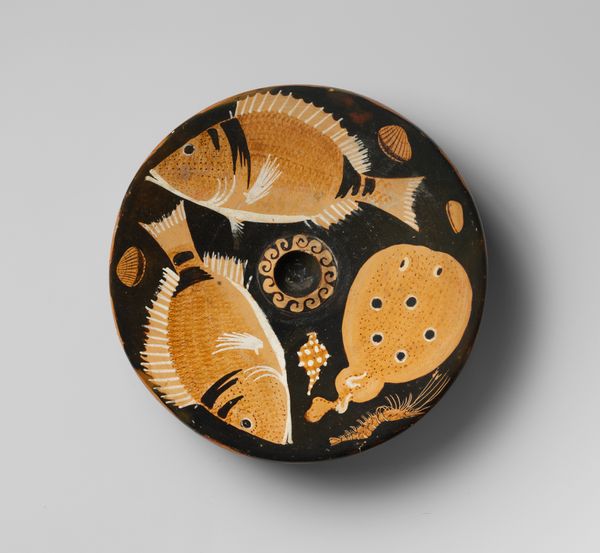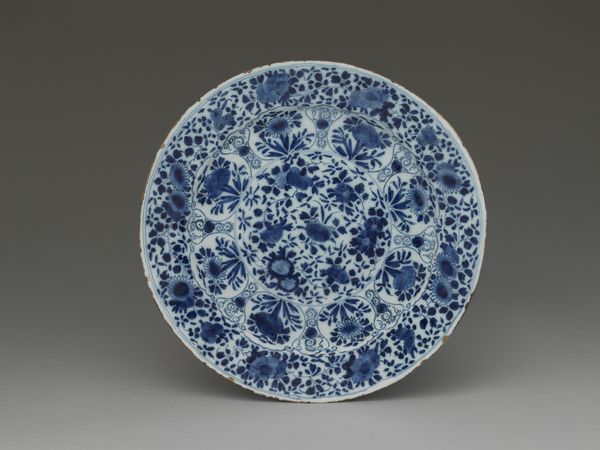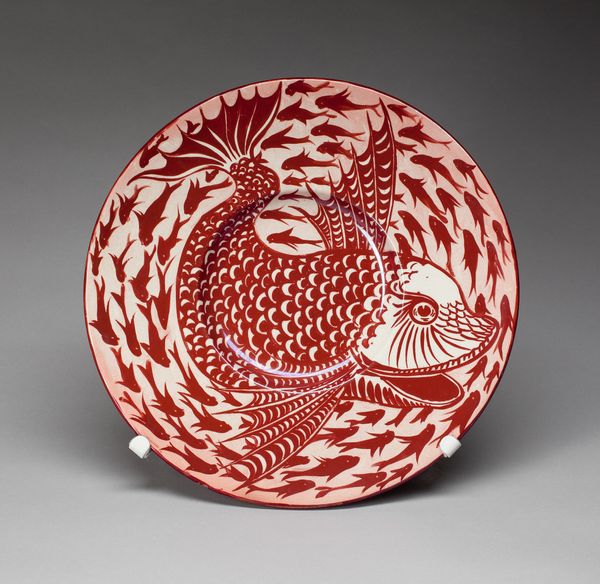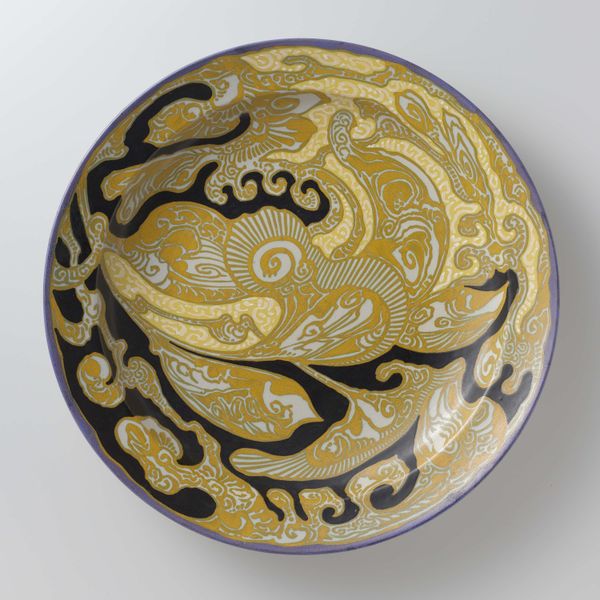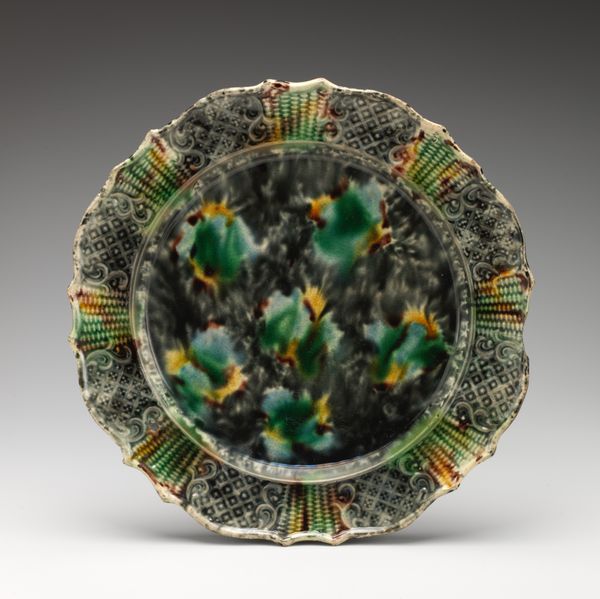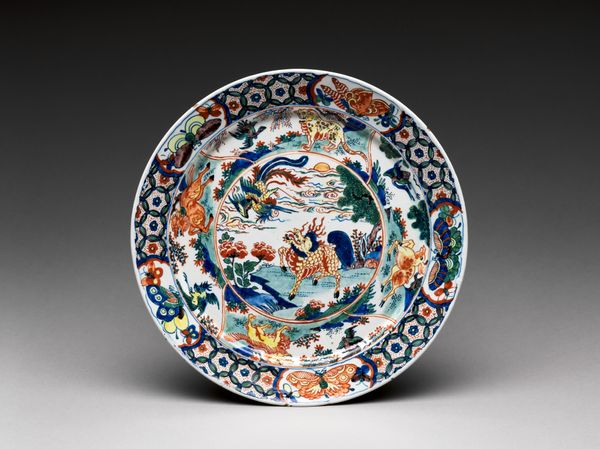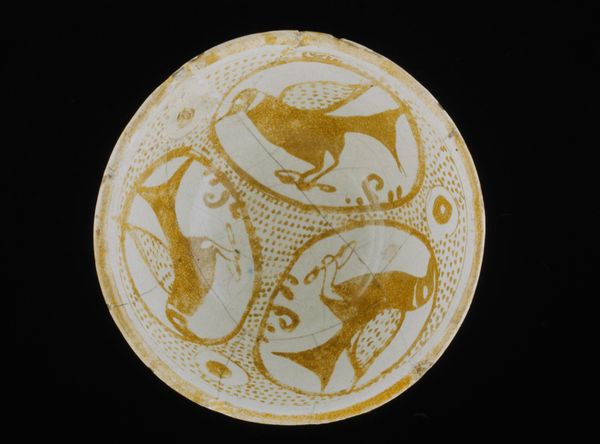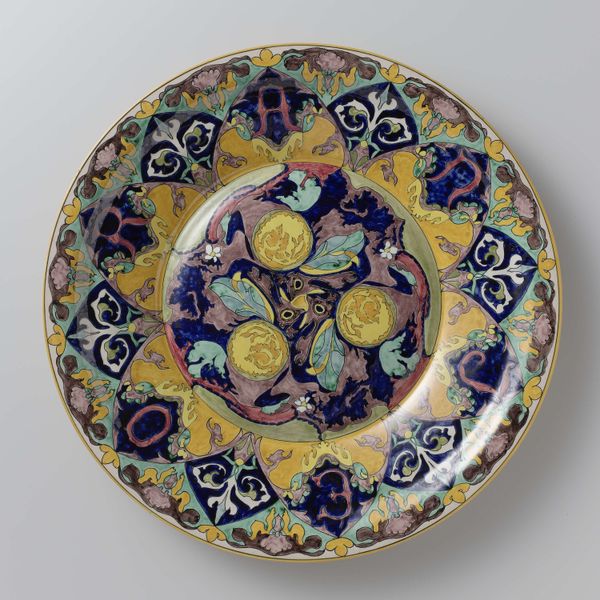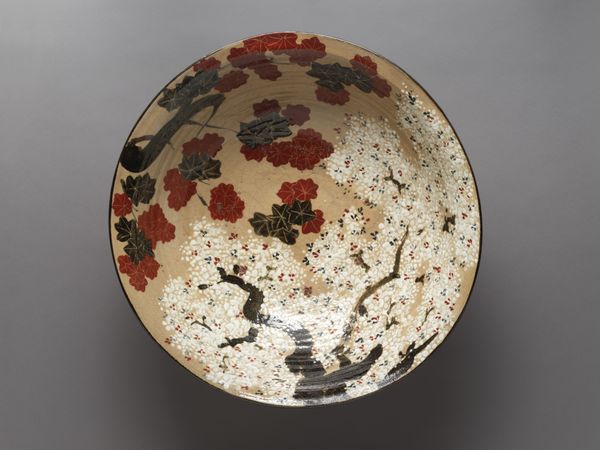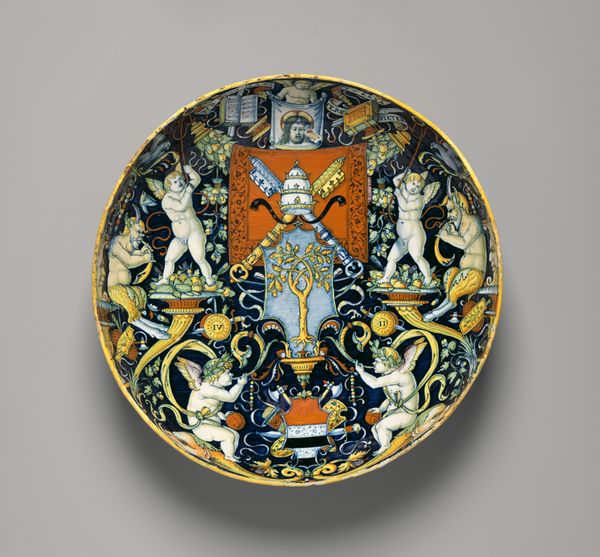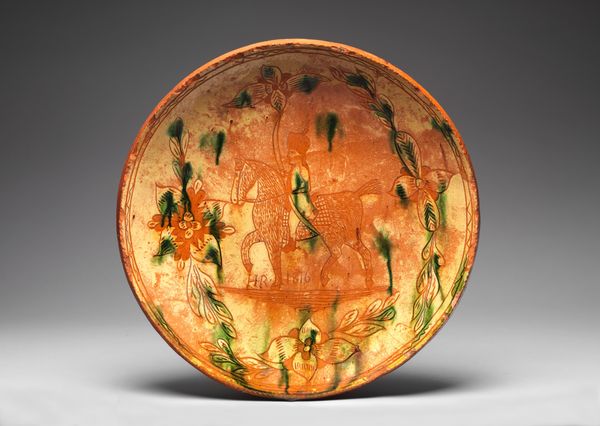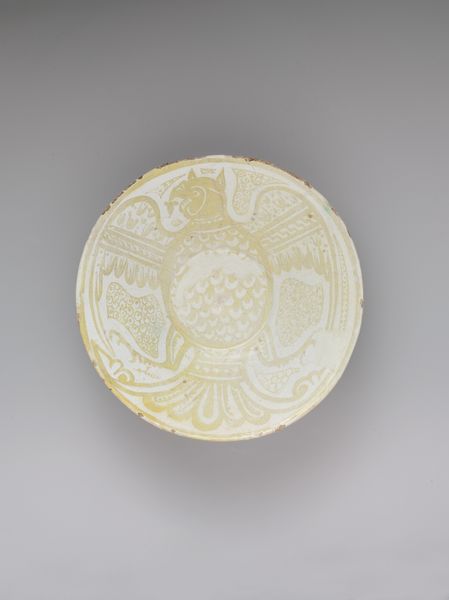
ceramic, porcelain
#
decorative element
#
asian-art
#
ceramic
#
flower
#
porcelain
#
orientalism
#
ceramic
#
decorative-art
Dimensions: 10 1/8 in. (25.7 cm)
Copyright: Public Domain
Curator: Let’s consider this Plate from between 1877 and 1893, made by Ott and Brewer. The piece is porcelain and currently held at the Metropolitan Museum of Art. Editor: My first impression is that the ornate design work gives the plate a festive, energetic feeling. Curator: Absolutely. Formally, it is fascinating to see how the orange floral patterns play against the negative space of the white porcelain. The application of gilt detailing enhances the graphic arrangement and formal qualities of the composition. How does it speak to you? Editor: For me, the interest lies in the makers’ mimicry of Asian aesthetics. This porcelain, likely made for affluent Americans, appropriates imagery associated with Asian export ware, such as birds, blossoming branches, and stylized floral arrangements. What this reveals is a desire for exoticism, reflecting a period of mass consumption, while obscuring the labor practices that enabled such mass consumption and production in a ceramic factory like Ott and Brewer. Curator: Indeed, the piece reflects Orientalism—a 19th-century fascination with appropriating and idealizing Asian cultures. The structure feels somewhat staged. A surface treatment is presented as insight; it does make you wonder, though, whether such representation of the East tells us more about the cultural moment of the West. Editor: The plate, thus, is more than just a surface. It invites us to consider what is not immediately visible, drawing our attention to the production methods, the socio-economic contexts and the politics of taste, that shaped its creation. Curator: And yet, it serves a function. It can be separated into surface design versus use, although I suspect that for pieces such as these, their worth exceeded their practicalities. I think looking at its components reveals insights into social context and manufacturing that have had lasting impacts on visual culture. Editor: Examining an everyday item like this provides insights into cultural exchange and reveals the hidden economies that shape art. I can agree with that.
Comments
No comments
Be the first to comment and join the conversation on the ultimate creative platform.
